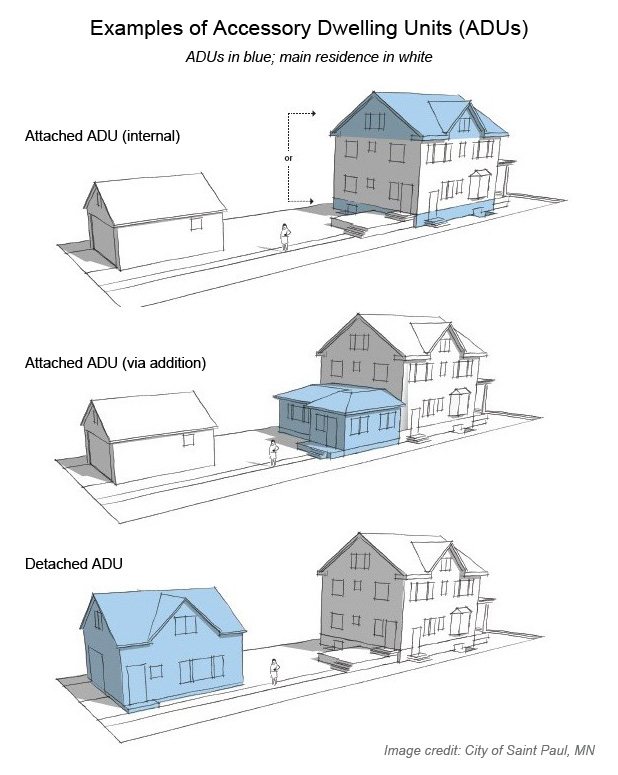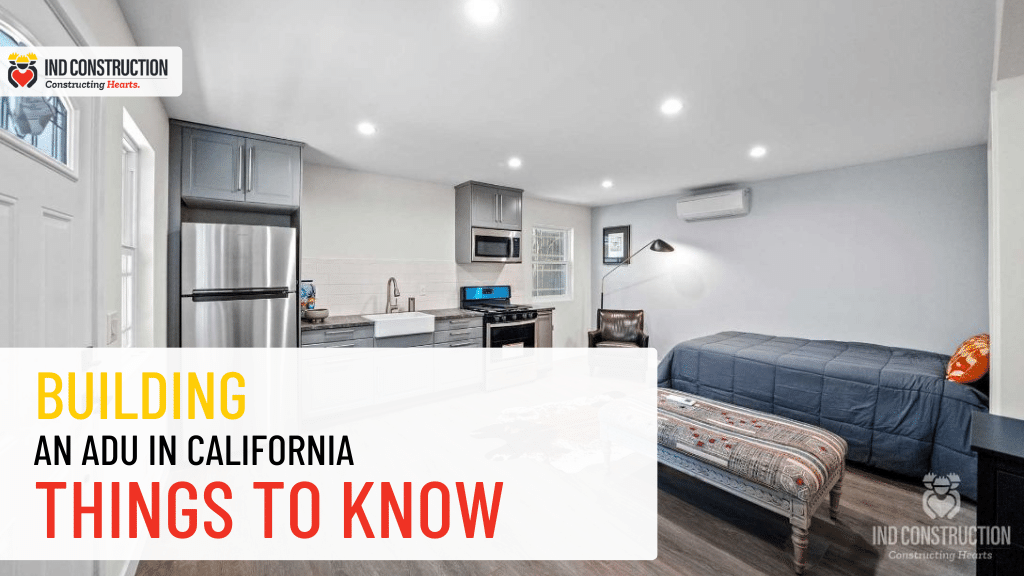Are you planning to create a separate space along with your home to use as a workspace or guestroom, or maybe you are planning to rent it out to generate some extra income? If yes, then building an accessory dwelling unit (ADU) is the best option. ADU is basically an attached or totally separate residential unit with all the living facilities for a single person or more than one person. There are multiple benefits attached to an ADU unit but building it is quite technical and difficult. This is because every country or even every city in the country has its own restrictions, building laws, and special ADU regulations. Sometimes these laws are totally different from one city to another. Therefore, it is very important to keep in mind every single regulation, as failure to accommodate these while building an ADU can result in legal obligations, fines, and penalties which ultimately leads to the loss of a lot of money and time.
Understanding and analyzing all the laws and regulations can be very confusing and irritating for homeowners while building an ADU unit. To facilitate your understanding and in order to give you some clarity, we are highlighting major ADU rules and regulations of California state which are essential to consider for building an Accessory Dwelling Unit (ADU).
1. Different types of Accessory Dwelling Units

Let’s first take a look at the different types of Accessory Dwelling Units that homeowners can build as per their choice and convenience.
Attached ADU – This type of Accessory Dwelling Unit basically allows homeowners to construct the unit attached to the walls of their main house.
Detached ADU – Separated or detached ADU is a totally separate unit from the main house. This type is mainly constructed in the backyard.
Garage Converted – Instead of building a new unit, homeowners usually convert their garage area into an ADU either of the same size as the garage or they can also expand its area to some extent as per their convenience.
ADU Over Garage – Most popular type of ADU unit in California is to build a completely separate unit over the garage area. By doing so, homeowners can enjoy a separate ADU without compromising the garage area.
Junior Accessory Dwelling Unit (JADU) – This is basically a smaller type of ADU. JADUs have normally more restrictions or limitations than ADUs. Such as, if homeowners wish to rent out the JADU, then it is compulsory to occupy the main residence. Also, a JADU should not be larger than 500 square feet.
2. Which Property is permitted for an ADU in California?
The first and very obvious question that arises in the mind of every homeowner is whether their property is eligible for building an Accessory Dwelling Unit or not. So, here is the answer, any homeowner with a single-family home can build an ADU as soon as their property is in the residential zone or mixed-use zone. If building an ADU could increase your floor area ratio, then the maximum limit for building an ADU is 800 square feet.
3. Special ADU Ordinance and Laws by your area Jurisdiction
Jurisdiction is basically the legal authority that decides property rules and regulations in your city. All the sets of regulations in order to build an ADU passed by your jurisdiction are known as “ADU Ordinance”. Some cities or areas have lenient ordinances in comparison to the state laws while some areas have aligned laws as per the ADU rules of the overall state with only minor additions or changes. If your city or area does not have any special set of regulations, then homeowners are obliged to follow the state regulations related to building an ADU.
4. Floor Area Ratio (FAR)
The most common rule that can impact ADU construction in any area of California is the floor area ratio (FAR) rule. The mentioned rule does not restrict any homeowner from building an Accessory Dwelling Unit, however it applies conditions such as the height or length of the ADU unit which you can build. Therefore, it is essential for the ADU contractor to deeply study the local FAR rule for your area before starting the actual construction.
5. Permitted Quantity of ADUs in California
The quantity of ADUs in California depends on the type of property you already have. As per the ADU regulations, there are two scenarios for single-family houses: if you have only one structured single-family house or if you have two or more detached houses on one single property, then it will be considered a single-family house, and not a multi-family house. In both scenarios, homeowners of single-family houses are permitted to build the following ADUs
- One detached or attached Accessory Dwelling Unit
- One Junior Accessory Dwelling Unit
For multi-family houses, i.e., structures that include two or more residences such as an apartment building, then ADU regulations are different from single-family houses. For such types of properties, regulations are totally dependent on the area’s jurisdiction. As per the state laws, homeowners of multiple-family houses can build the following
- Two totally separate ADUs with a height limit of 16 feet
- Up to two detached ADUs converted from a separate structure like a car garage etc.
6. Renting out Accessory Dwelling Unit
Yes! One of the major reasons that homeowners are moving towards building Accessory Dwelling Units is the generation of some extra income by renting it out for shorter as well as for longer time periods. Depending on the ordinance issued by your area jurisdiction, homeowners can even rent out their ADUs for less than 30 days. As per the latest state laws for property management in California, the state has now allowed homeowners to rent out their main residence as well as their ADUs without the owner-occupancy rule. This ordinance is valid till Jan 01, 2025, but the state may extend this law further. This law is not applicable to the Junior accessory dwelling units, not in current times and not in the future. For JADUs, homeowners must live in the main residence in order to rent out their JADUs.
7. Utility requirements for New or Converted ADUs
If new Accessory dwelling units are created within the existing property or attached to the already constructed property or if it is being created by converting the already existing structure into a separate ADU then new utility connections or fees are not required. But if the ADUs are being created, totally separated from the already existing property then a new connection or fee is required depending on the Floor area ratio, square meter, or plumbing items in comparison to the main residence.
8. Accessory Dwelling Unit and Add in property value
Construction of an ADU increases your property value by almost 20%-30% but the increase depends on a lot of things such as type and size of ADU, location, etc. If homeowners want to boost their property value, then it is better to construct a detached or stand-alone accessory dwelling unit from the main residence. A separate ADU can give homeowners and ADU residents complete privacy. On the other hand, an attached ADU offers less hike in property value as it provides less privacy to other residents but the hike in this case totally depends on the design and construction pattern of the ADU in relation to the main residence. A garage converted ADU usually offers less increase in overall property value this is because, after conversion of a garage into an ADU there will be no garage for the main residence as well as for the ADU which will ultimately impact the overall property value.
9. Parking Requirements for ADU
If homeowners convert their existing garage into an ADU then there is no legal binding to provide a replacement for your parking space. For the other types of ADU, state laws do not require homeowners to build separate parking spaces if the unit is constructed within half a mile of walking distance from public transport, or if the ADU is in some historic area.
In the above analysis, we have highlighted and provided you with the major rules and regulations regarding property management in relation to the construction of Accessory Dwelling units in California. If you are considering building an ADU in California, then IND Construction is the best option to go with. Our team of experts has years of experience in the field of construction of Accessory dwelling units, Junior Accessory Dwelling Units, and all other types of ADUs with many successful projects. They understand all the legal, as well as hidden construction challenges and are experienced enough to overcome these challenges. We can guide you will all the legal proceedings in the state as well as on the local jurisdiction level to make your project a successful execution.




